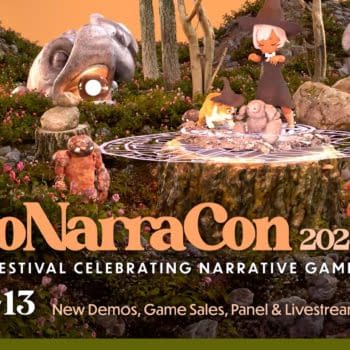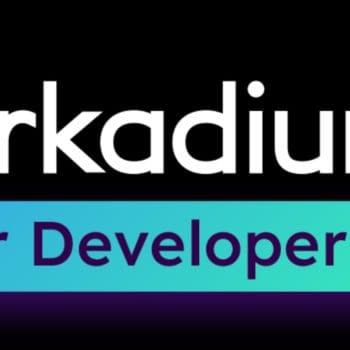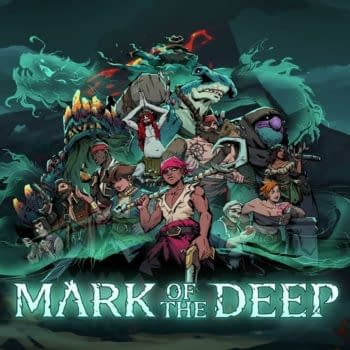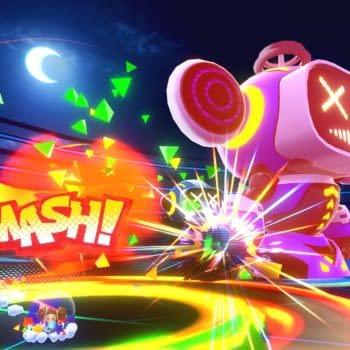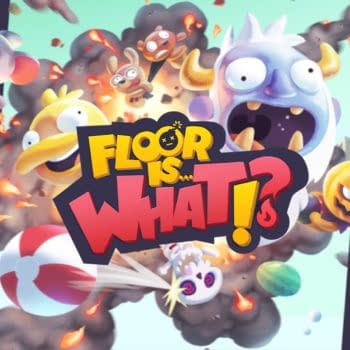Posted in: Games | Tagged: A Lego Brickumentary, collecting, entertainment, lego, toys
Inclusion, Sustainability, And Fun – A Lego Interview At San Diego Comic-Con
By Siike Donnelly

I was very fortunate to sit down at SDCC to speak with Amanda Santoro, a Brand Relations Manager that has worked for the Lego Company for nearly four years. As someone who has become obsessed with Lego, I wanted to know more about the company and its effect on their fans.
Siike: Hi Amanda! Thank you for meeting me today.
Amanda: Thank you!
S: Alright, let's start with a hard question. What is your favorite Lego set?
A: (Laughs) My favorite sets are usually the holiday ones. I like the Star Wars Advent Calendar, and the Seasons House where you can change the house from Spring to Winter, building it three different ways, and anything Christmas related. I love those.
S: I recently purchased that Seasons House and totally agree. I love taking it apart and rebuilding it to match the new season.
A: It's a lot of fun.
S: I love companies that have "inclusion" as one of their foundations. How good does it feel knowing the Lego products appeal to so many?
A: It's wonderful for us as a company to reach so many types of fans; all ages, not just kids, and of all interests and different abilities. So that's great for us to have a product that people can play together as families or on their own that might remind them of their childhood. We also love reaching people that might be new to Lego and recently kind of learned what we're all about, and how it's a way to express creativity. If they want to build something original, or follow the instructions and build their favorite ship or set from a particular franchise you love, they're free to play with Lego however suits them best.

A: The Friends line was introduced in 2011, and in that four years has helped us expand our brand in new and exciting ways. Our research showed we had a lot of young girl builders, which we've seen has expanded with the Friends line, which is why we introduced the Disney Princess and Elves lines, and our hope is that they enjoy them so much that as they become fans of Star Wars or Super Heroes and other brands we work with, will build those as well. And in those sets, we try really hard to have a nice balance of all types of characters in hopes that we get in everyone's favorite character at some point. I would say we aren't really pushing an agenda one way or the other, but just try to find a nice balance and make the best products that we can.
S: When developing a new line of Lego sets, what's the process like when choosing how many sets to put in the line, and which characters, ships, and environments to include?
A: It really depends. All of our production is done in Denmark, at our Global Headquarters. We have teams of developers and product designers that work on these specific brands. That means there's a team that works just on Star Wars, and another that works on the City line, etc. They, from a business perspective, look at the molds, how many new or unique ones they can create, but also with a specific brand figure out financially how many different sets can be released, covering a variety of price points. So they have to think about everything, not just creatively, but from a business point of view. A lot of research goes into it, then they develop prototypes, then do research with kids to see if it's something they're interested in, or if the designers have to go back and make some tweaks. It's a long development process, taking around 2 years from conception to hitting store shelves; 18 to 24 months roughly.
S: So two years ago, when I was just getting back into collecting, the sets that are here right now at your booth are the ones you were all developing?
A: Yes. Some of them. Something like Star Wars, we've had that license for 16 years. So we look at the new content that's out there now, like Rebels or the upcoming films, but we also look back at some sets we've created before, like the Sith Infiltrator. Sometimes the designers find new ways to construct sets that may be hard to find or retired at this point, and want to bring those sets back for newer Lego collectors.

A: We're still in the very beginning stages of that. How I understand it, our Global Headquarters in Denmark is just looking to see what kind of future of sustainability there is for a new plastic. No decisions have been made, and we're not sure yet what this overall process will be, or its outcome, but we as a company feel it's important to keep up with the times and always think about these types of things. All we're able to say at this point is that Lego is putting money and research behind it and are simply making our best efforts to make it a reality.
S: To many, Lego is simply a toy. For people with autism, learning disabilities, or brain aneurysm survivors, Lego is also a learning and development tool. Would Lego ever consider reaching out to the Autism Society or the Brain Aneurysm Foundation to make an exclusive mini-set to help raise awareness or funds to these causes? Or is Lego already involved with various medical communities?
A: We are definitely aware of these effects. We have the Lego Foundation, which is our non-profit organization, which is also a global foundation. They work with a number of foundations and communities around the world, giving back where they can, sometimes using or developing products to do so. We're very interested and very inspired by what our toy can do, so we're always looking to help in ways that we can for not only kids, but adults as well, which is why the Lego Foundation exists. It's something that is always evolving, and helping is something we're always open to. A lot of what the Lego Foundation does is to see how Lego products can benefit people.

A: It's really important to us that we recognize that though we have a lot of creative people working for us, we also have a lot that do not. One of my favorite lines from A Lego Brickumentary was, "we realize that 99.9% of the world's smartest and most creative people do not work for the Lego Company."
S: I loved that line too.
A: With the creativity that we generate ourselves as a company, we also fully recognize that our fans are such advocates and ambassadors for us that they also come up with really great ideas. We certainly see that as a huge benefit and it really inspires us knowing that people have such a love and affinity for the brand. Knowing that it means so much to our fans to see their favorite things in Lego form that they will make it themselves and bring their own ideas to life is truly a great thing, and a very unique experience for us.
S: I just started doing this myself, throwing out the instructions and building my own sets. It's a lot of fun. Maybe I'll post one of my recent MOCs (My Own Creation) in this article.
A: We have a group at our company that works with fans like you, AFOLs (Adult Fans of Lego), sometimes hiring them as you see in A Lego Brickumentary, and we always want that relationship to exist, not just from a business perspective, but also a fan engagement perspective. So we will continue to do that with Lego Ideas, which allows us to not only work with our fans, but also allows us to produce rare and interesting sets that we normally wouldn't get to do. Our goal is to always evolve and create things you might not expect to see form the Lego Company, which is helped by the products our fans are inspired by and the ones they inspire us to make.

S: Well, you all have certainly inspired me on many levels. I can't think of a better note to end on, so thank you so much for your time, Amanda.
A: Thank you, this was a lot of fun.
A Lego Brickumentary is in select theaters and video-on-demand and iTunes, July 31st.
Siike Donnelly is a writer and comic book editor that lives in Los Angeles with his rescue dog Echo, working for OSSM Comics. He's still trying to raise money for the Brain Aneurysm Foundation through sales of his book The Adventures of Solestar to donate to them, in full, this fall. He hasn't been too successful, so help him reach his goal if you can by buying his book, or donate directly to the foundation here. He can be found on Instagram: @SiikeAndDestroy











